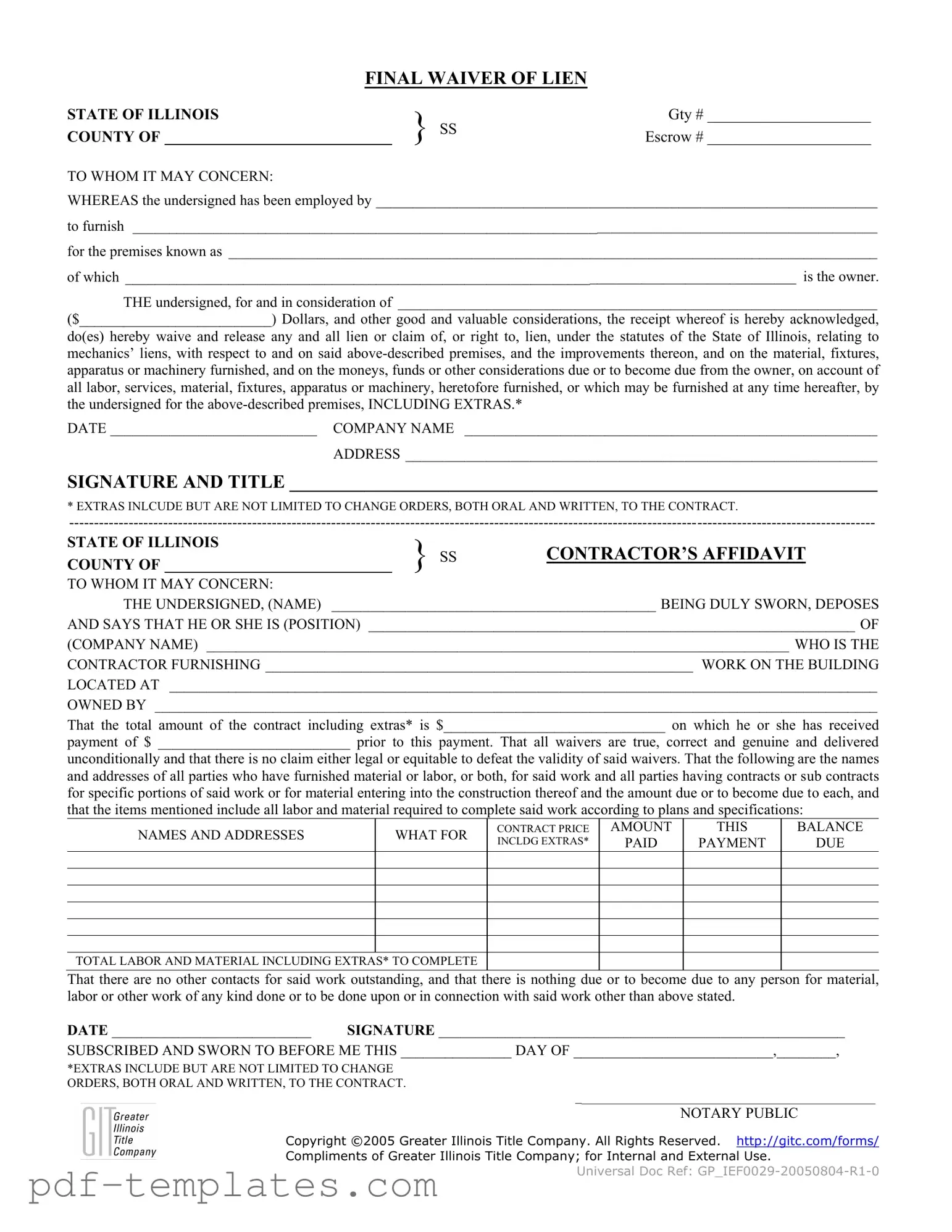The Illinois Final Waiver of Lien form shares similarities with the Mechanic’s Lien Waiver form, which is commonly used across many states. Like the Illinois form, the Mechanic’s Lien Waiver serves to release a contractor’s right to file a lien against a property once payment has been received. Both documents aim to provide assurance to property owners that all parties involved in a construction project have been compensated for their work. This helps to prevent disputes over unpaid labor or materials, fostering a smoother transaction process in real estate dealings.
Another document akin to the Illinois Final Waiver of Lien is the Partial Waiver of Lien form. While the Final Waiver indicates that all obligations have been met, the Partial Waiver allows contractors or subcontractors to acknowledge receipt of payment for specific work completed, while still retaining the right to file a lien for any remaining unpaid amounts. This distinction is crucial for contractors who may wish to secure their rights while still maintaining a working relationship with the property owner. Both forms serve to clarify payment status and protect the interests of those involved in construction projects.
The Contractor’s Affidavit is another document that bears resemblance to the Illinois Final Waiver of Lien. This affidavit is often submitted by contractors to confirm that they have been paid for their work and that all subcontractors and suppliers have also been compensated. Similar to the waiver, it aims to eliminate any potential claims against the property by ensuring that all parties involved have been satisfied financially. The Contractor’s Affidavit provides an additional layer of security for property owners, as it verifies that there are no outstanding debts associated with the construction project.
In California, it's essential for vehicle owners to understand the implications of appointing someone through a Motor Vehicle Power of Attorney form. This document facilitates a range of activities such as vehicle registration and signing relevant sales documents, thus ensuring that even in an owner's absence, necessary actions can still be carried out effectively. For those looking for additional resources and options related to this form, you can check out All California Forms for comprehensive information and guidance.
The Subcontractor’s Waiver of Lien also parallels the Illinois Final Waiver of Lien form. This document is specifically designed for subcontractors who have worked on a project and wish to waive their lien rights after receiving payment. Just like the Illinois waiver, it serves to protect the property owner from potential claims by ensuring that all subcontractors have been paid for their services. This helps to maintain clear communication and trust among all parties involved in a construction project, reducing the risk of future disputes.
Finally, the Final Payment Certificate is another document that shares characteristics with the Illinois Final Waiver of Lien. This certificate is issued upon completion of a project and signifies that the contractor has received full payment. It often includes a statement that all lien rights have been waived, similar to the Illinois waiver. The Final Payment Certificate provides peace of mind to property owners, confirming that they are free from any future claims related to the project. Both documents play essential roles in the closing stages of construction, ensuring all parties have fulfilled their obligations.
